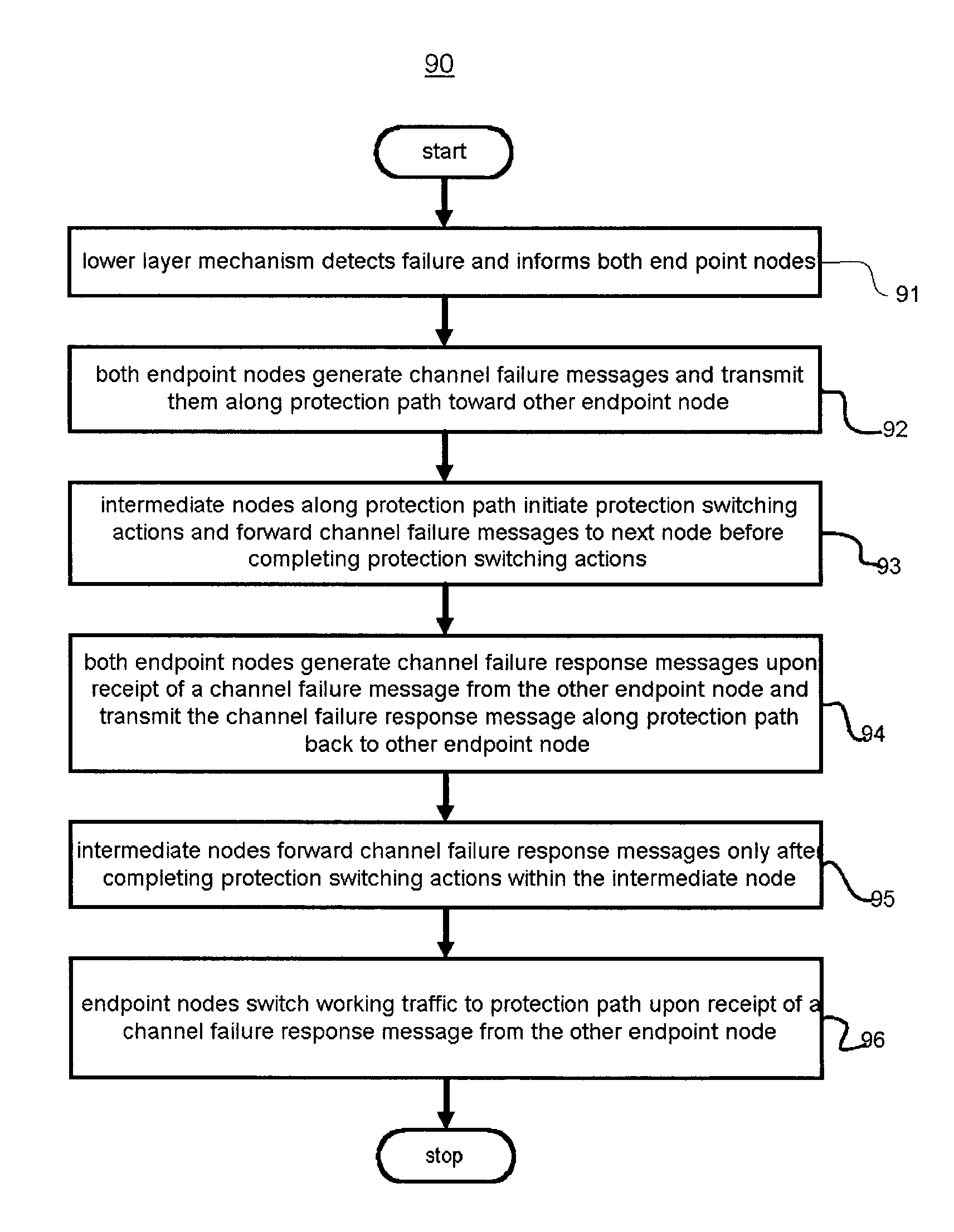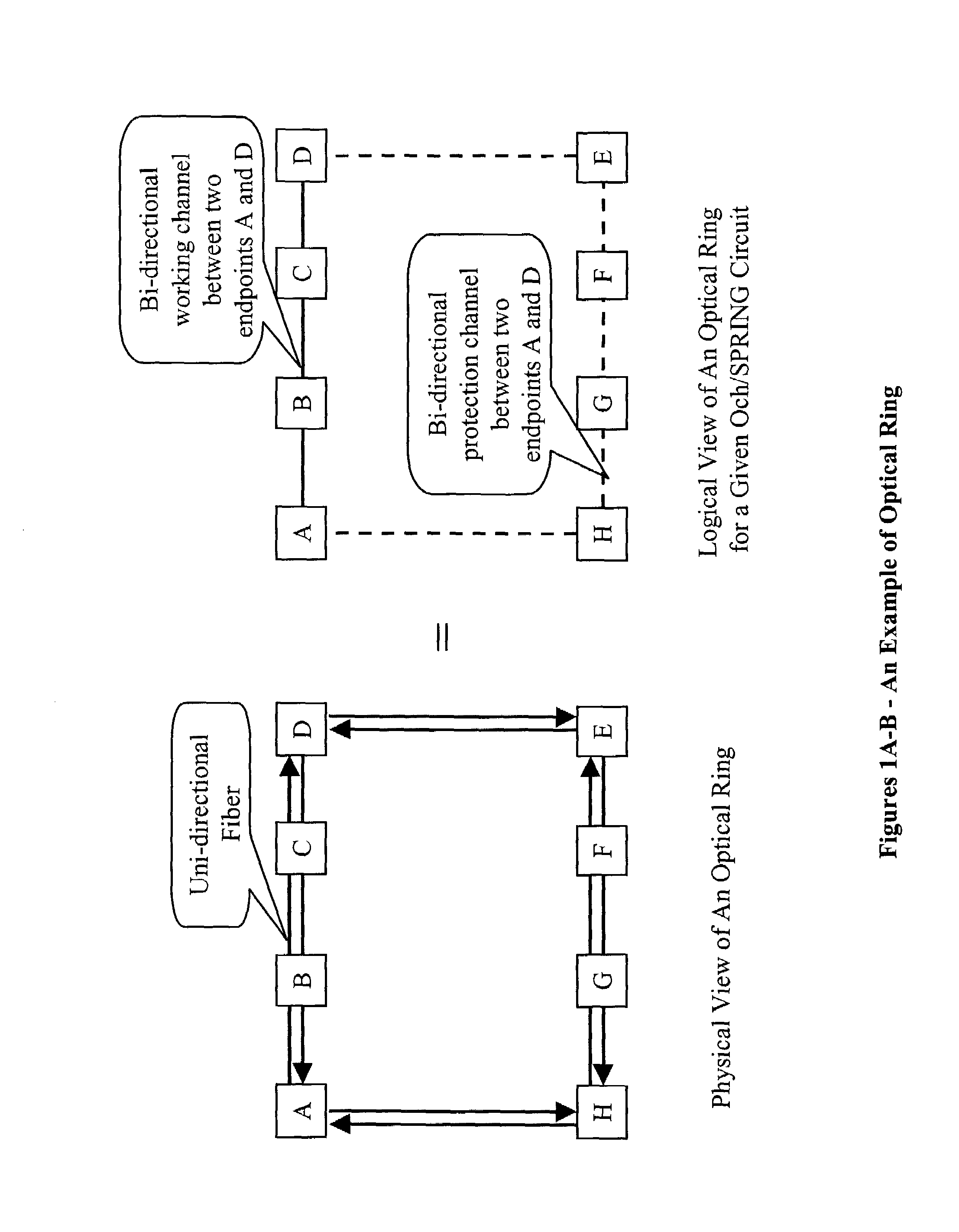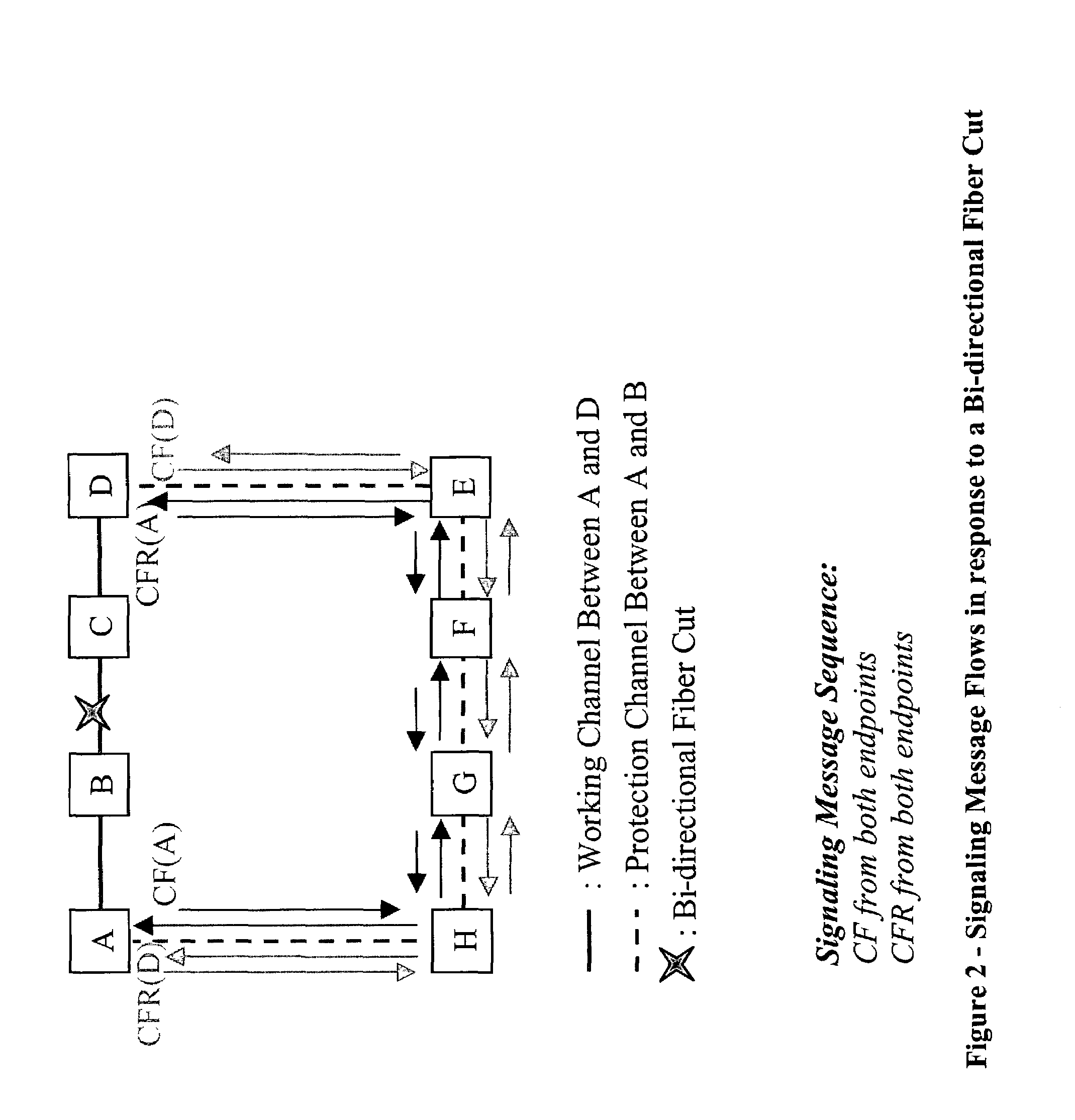Optical automatic protection switching mechanism for optical channel shared protection rings
a technology of automatic protection and protection switching, applied in the field of optical communication networks, can solve the problems of service layer protection intractable, protocol and algorithm protection not designed, and the best possible approach
- Summary
- Abstract
- Description
- Claims
- Application Information
AI Technical Summary
Problems solved by technology
Method used
Image
Examples
case 1
[0037] Bi-Directional Failure
[0038]First, we discuss the messaging flow in response to bi-directional failure, such as a bi-directional fiber cut. Assume that after a bi-directional fiber cut between nodes B and C, both endpoints A and D detect a failure via a lower layer mechanism that is vendor specific. Upon detecting the failure, both endpoint nodes (A and D) initiate protection switching by generating channel failure (CF) messages toward each other along the protection path (e.g., the long path). Thus, protection switching is initiated from both ends simultaneously, or nearly so depending upon the relative notifications of the failure by the lower layer mechanisms.
[0039]All nodes on the protection path including both end nodes and intermediate nodes will perform following tasks. Upon receiving the first channel failure message, regardless of where it is originated, each node initiates protection switching actions for both directions and forwards the channel failure message to t...
exemplary embodiment 90
[0047]FIG. 9 depicts an exemplary embodiment 90 of a method for performing protection switching in flow chart summary form. In step 91, a lower layer mechanism detects failure and informs both endpoint nodes. The detection mechanism can vary according to vendor equipment.
[0048]Next, both endpoint nodes generate channel failure messages and transmit them along protection path toward other endpoint node (step 92). These failure mechanisms may be transmitted at slightly different times, depending upon the mechanism that detects the failure and its relationship to the endpoint nodes, as well as the processing variations in the two endpoint nodes. Nevertheless, these two endpoint nodes will initiate protection switching as quickly as possible from both ends of the protected link.
[0049]Intermediate nodes along the protection path initiate protection switching actions and forward all received channel failure messages to the next node in line along the protection path before completing prot...
case 2
[0053] Uni-Directional Failure
[0054]For a uni-directional fiber cut, only the end node on the receiving side of the uni-directional failure can detect the failure. After detecting a failure, the end node on the receiving side of the uni-directional failure will initiate the protection switching action by generating a channel failure message towards the source along the protection path (e.g., the longer path) and immediately notify the other end node via working channel, e.g., the short path, by sending, e.g., a SONET K-byte short path signal toward the other end.
[0055]The time to take for the other end node to be notified will be the time of composing the K-byte signaling, plus the propagation delay of speed of light and the processing delay at the receiving end. As soon as the other end node receives the K-byte signal, the other end node sends out the channel failure message along the protection path. It is very unlikely that an end node X receives a channel failure message from th...
PUM
 Login to View More
Login to View More Abstract
Description
Claims
Application Information
 Login to View More
Login to View More - R&D
- Intellectual Property
- Life Sciences
- Materials
- Tech Scout
- Unparalleled Data Quality
- Higher Quality Content
- 60% Fewer Hallucinations
Browse by: Latest US Patents, China's latest patents, Technical Efficacy Thesaurus, Application Domain, Technology Topic, Popular Technical Reports.
© 2025 PatSnap. All rights reserved.Legal|Privacy policy|Modern Slavery Act Transparency Statement|Sitemap|About US| Contact US: help@patsnap.com



